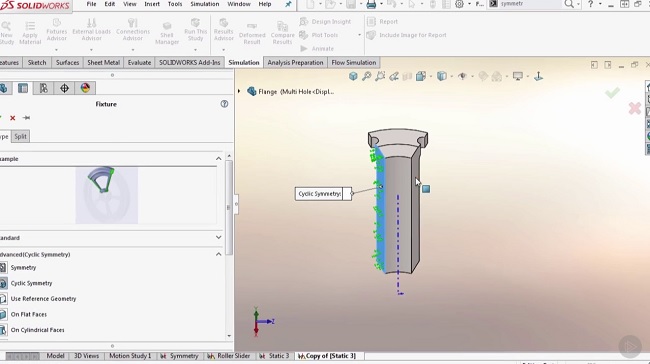SOLIDWORKS Simulation - Save Time with Simplification Methods

Duration 1h 21m Project Files Included MP4
SOLIDWORKS Simulation – Save Time with Simplification Methods

Duration 1h 21m Project Files Included MP4
SOLIDWORKS Simulation – Save Time with Simplification Methods
Info:
When using structural simulation, designers and engineers primarily determine the strength and stiffness of a product by reporting component stress and deformation. There are three segments involved in producing outputs that can be used in your design process, pre-processing, calculation time, and post-processing. In this course, SOLIDWORKS Simulation – Save Time with Simplification Methods, you’ll be introduced to five major techniques to reduce your calculation time. First, you’ll learn symmetry methods whether through modeling or through simulation, and how to use 3D and 2D symmetry restraints. Next, you’ll cover contact conditions, hardware considerations, mesh types, and solver choices while comparing solve times for each scenario. This will provide you with useful metrics going forward. Additionally, you’ll explore the pre- and post-processing segments, and make those segments more efficient. The aim is to reduce time spent while mouse tracking. Finally, you’ll see SOLIDWORKS CAD tools that are very useful when applied to simulation setup. By the end of this course, you’ll know the top five ways to reduce your calculation time, and efficiency techniques to speed up your pre- and post-processing time. Software required: SOLIDWORKS
When using structural simulation, designers and engineers primarily determine the strength and stiffness of a product by reporting component stress and deformation. There are three segments involved in producing outputs that can be used in your design process, pre-processing, calculation time, and post-processing. In this course, SOLIDWORKS Simulation – Save Time with Simplification Methods, you’ll be introduced to five major techniques to reduce your calculation time. First, you’ll learn symmetry methods whether through modeling or through simulation, and how to use 3D and 2D symmetry restraints. Next, you’ll cover contact conditions, hardware considerations, mesh types, and solver choices while comparing solve times for each scenario. This will provide you with useful metrics going forward. Additionally, you’ll explore the pre- and post-processing segments, and make those segments more efficient. The aim is to reduce time spent while mouse tracking. Finally, you’ll see SOLIDWORKS CAD tools that are very useful when applied to simulation setup. By the end of this course, you’ll know the top five ways to reduce your calculation time, and efficiency techniques to speed up your pre- and post-processing time. Software required: SOLIDWORKS
2.23GB